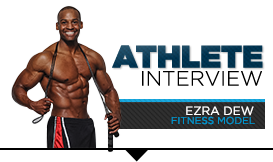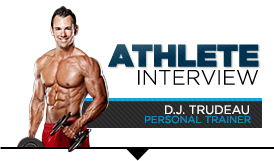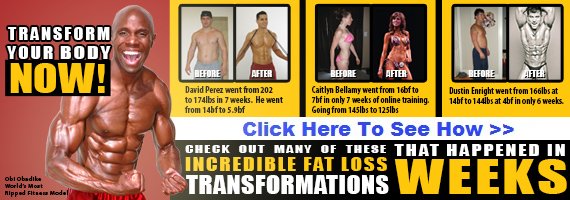Every personal trainer has a particular approach to fitness; each client has individual goals and needs. There's no exact formula for fitness. It's a trainer's job to figure out what their clients need and how best to help each reach their goals. It's also a trainer's job to adjust their particular philosophy to get the best out of their clients.
So how do they do it? These three trainers have come together to answer questions about how training differs for everybody. Each trainer brings a unique perspective to the industry. Here's the inside scoop!
DJ Trudeau: The best method is to just do pull-ups and not just 4 sets of 10 either! If you're looking to get results, you need to put in some work. That means spending 20 minutes four days per week doing pull-ups. I suggest burnout sets. By the last set, you should barely be able to get one rep. In a couple of weeks you'll see tremendous results.
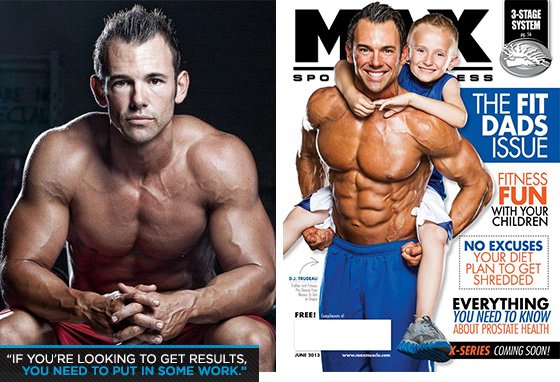
Ezra Dew: There are many exercises to strengthen muscles used in the pull-up movement, but nothing substitutes actually performing the pull-up. Form is fundamental to making gains and avoiding injury. Retracting your scapula and raising your chest will engage your lats. It's also smart to keep a slight bend in your elbows so you avoid stressing your tendons and ligaments.
Envision pulling your chest instead of your chin toward the bar. Focus on driving your elbows to the floor; the rest of your body should be completely still. When you lower yourself, do it slowly. Allow gravity to work its eccentric resistance to spur more muscle growth.
Wendy Russo Otto: A lot of women come to me wanting to learn how to do pull-ups. It starts with grip strength. Many women can't even hang on to the bar. That's a bad start. Your body weight needs to be normal for your height. So, if you're a woman who's not overweight, we'll start by doing grip-strengthening and open-grip pulling exercises. Once grip is sufficiently strengthened, we'll move on to negative pull-ups. Jump up to the flexed-arm-hang position. Then lower yourself slowly. Try to go slower and slower each time.
Work on holding your body weight up. Assistance machines are the worst way to learn a pull up. If you never learn how to grip or how it feels to hold your own body weight, you'll never get better.
DJ: As a personal trainer and coach, you want to give advice that will result in maximum physical change with the least psychological resistance. The main principles stay the same, but you still have to tailor each plan based on the individual needs of each client, their level of commitment, their readiness for change, and the level of support they have. Then you have to constantly measure and re-evaluate their results. Without good communication, this process becomes difficult. To be an effective trainer, you should connect with each of your clients and establish a solid level of trust.
Ezra: Clear, short, and precise communication is best. A great trainer will also ask a client for feedback to solidify comprehension. Whether you coach in person or online, written, visual, and interactive demonstrations work.
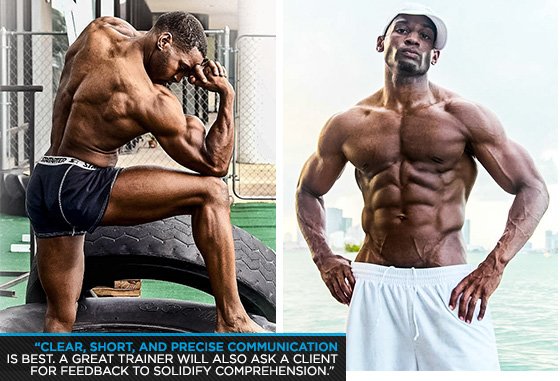
Wendy: Open communication is essential for success. My clients have my cell phone number. I encourage them to text me if they are at the grocery store and have a question. During workouts, I make sure that my clients feel comfortable telling me if they have an injury, or if a particular exercise hurts them. I constantly ask questions regarding how they feel and what they feel.
DJ: Cheat meals are important. They're helpful from a psychological standpoint because people can eat clean the majority of the time knowing that they are allowed a cheat meal once in a while. Cheat meals keep your body guessing. If your body isn't sure how many calories or what nutrients it will receive, your metabolism could speed up. As long as it is a controlled cheat meal, and the rest of the time you eat to fuel your body for the best performance, I'm all for it!
Ezra: Cheat meals are extremely important to ignite your metabolism. I allow my clients to cheat once within a six-meal day, or one day in a seven-day period. The body instinctively finds a way to efficiently digest the same foods, which slows the metabolism. Cheat meals take more energy to digest, causing a metabolism hike. Just like your physique, your metabolism can hit plateaus. Mixing up your diet can provide optimal development and growth.
Wendy: I always tell my clients, "I will never ask you to do something I don't do myself." I eat cheat meals for sanity purposes, so of course I suggest that my clients do the same. The latest science shows the body needs to cheat to reset the leptin (a fat-burning hormone) levels that fall incredibly low from dieting too much. The only time I don't allow cheating is when I'm training someone for a bodybuilding show and we get a few weeks out.

DJ: I'm into the mental side of training. It's not all about weights or chicken and broccoli. Every client comes to me with a goal in mind. Some people are there to build muscle; others to have more energy; and others just want be around longer for their children. My goal is to discover their "why" and then watch the change happen. They want to lose weight, want to build muscle, but why? Is it to have more energy? I see in people their end result, but not everyone believes they can get there. I help them find confidence, and commitment to working hard. My No. 1 motivation technique is to convince people to believe in themselves.
Ezra: We all have that one thing in our life that motivates us. That one idea, dream, or belief can continue to ignite the will when the body falls into mediocrity.
Connecting with a person exposes patterns and beliefs that have brought them this far on their pilgrimage. It's called personal training for a reason. The approach is different for each person. With experience, the pattern is easy to recognize. The vision a client might have of himself can be real with disciplined affirmations, progress photos, challenging engagement, and accountability.
Wendy: Not everyone can fit the gym into their everyday lifestyle. I encourage people who can't always make it to the gym to do outside activities with their kids, spouse, or by themselves. You don't have to work out in a gym to train hard. I participate in activates outside the gym and I encourage it. No, it's not great for gym membership, but frankly, I want to see people healthy. If, after a few months, I lose a client to an outdoor sport they love, then it's a win-win.
DJ: Both are great lifts, but if I had to pick one I'd pick pull-ups. I love that you can adjust your hands—close grip, wide grip, reverse grip, etc.—and hit all the muscles in your back. I also love that you use your own bodyweight to do the lift.
Ezra: Pull-ups are to the back what squats are to the lower body. When doing pull-ups, you engage and recruit almost all of the back muscles. Pull-ups also target the back's width, girth, and density. T-bar rows only hit density and girth. We want that 3D growth.
Wendy: I say you need both. Show me a guy who does nothing for his back but pull-ups. Is his back overdeveloped? Same question to the guy who only does T-bar rows. Both movements have places in the development of the back. You need to pull from various directions and grip placements to create a fully-developed back.
DJ: Fasted cardio is great for fat loss, but it can also cause muscle loss. I like to control my body fat through proper diet and lifting like a beast. If someone can do next to no cardio and get away with it, I'd go that route. Most people need cardio though; the amount and frequency is based on individual need.
Ezra: My philosophy on empty stomach cardio for fat loss is extremely positive. But, I only take this approach with my athletes or competitors. If you perform cardio before you eat, more blood is available for mental engagement and fat burning instead of metabolizing food. Your mind will be able to completely concentrate on the task for maximum output and maximum return.
Wendy: When you wake up in the morning your sugar levels are naturally low. If you eat something immediately upon waking, then you raise them. The theory is, if you eat and then do cardio, you'll have to spend the first part burning sugar until you get to your fat stores. If you don't eat anything, however, and just have a glass of water before you do cardio, you'll use fat stores immediately. The same principle is applied to scheduling work outs. You always lift before you do cardio, right?
Although it could work, I can't say that more fat is burned during the morning on an empty stomach. I've seen people burn fat doing routine cardio on various eating schedules. I know that getting it done early in the morning makes a crazy day a heck of a lot easier.
Contact Info: www.obiobadike.com
Like his Facebook fan page: http://www.facebook.com/oobadike
Twitter Info: http://twitter.com/obadike1
Email address: obifitness@verizon.net


